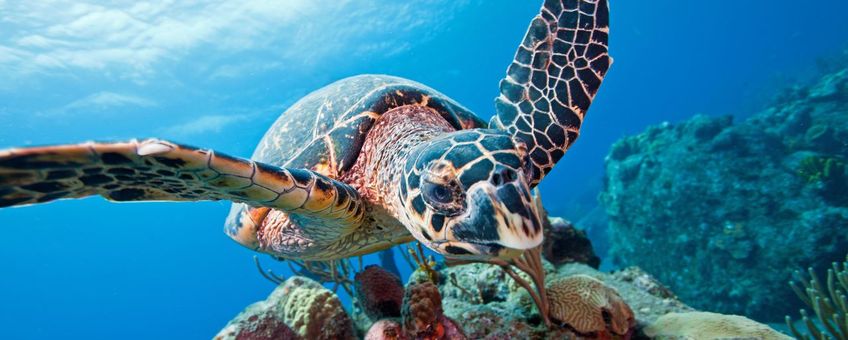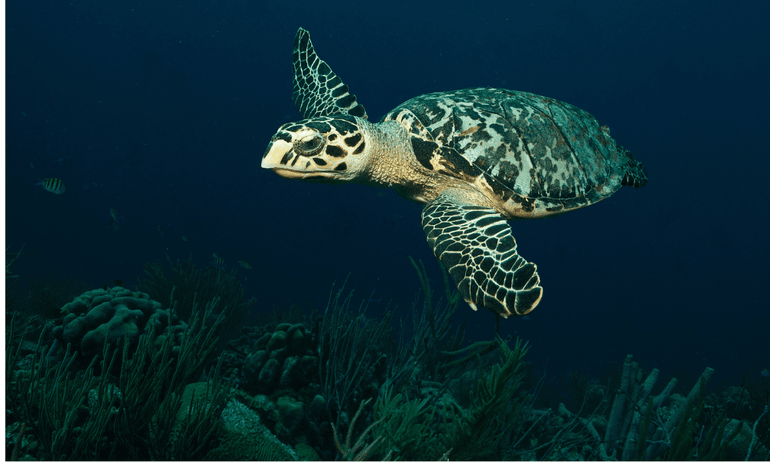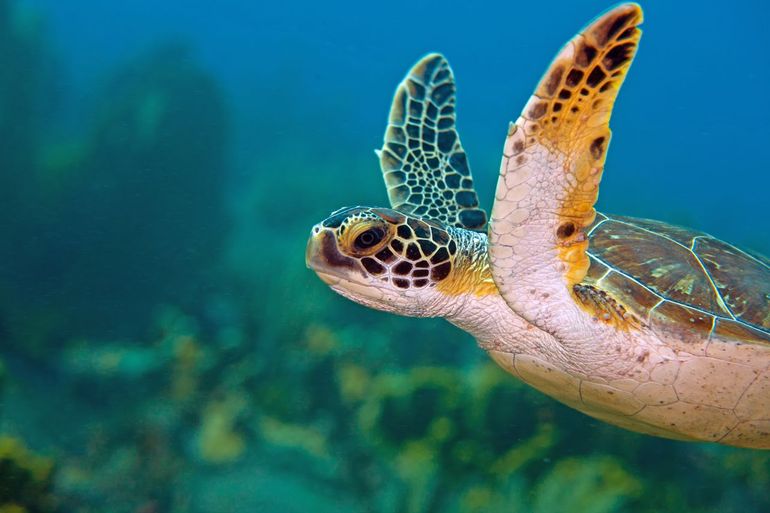
Sea turtle trends: understanding patterns with predictive models
Dutch Caribbean Nature Alliance (DCNA)Sea turtles are an iconic species that face a wide variety of threats. Since these species can travel vast distances, they are susceptible to a number of transboundary threats, including climate change and poaching as well as local concerns such as pollution and habitat loss. Monitoring nesting and foraging grounds is a critical part in understanding long-term sea turtle trends throughout the Caribbean.
Unfortunately, sea turtles can be difficult to accurately monitor due to issues with detection and hence incomplete counts. To combat this, research statisticians have developed methods to estimate detection and population size, allowing for more realistic counts. STCB has been working many years to monitor local turtle populations, and in collaboration with Frank Rivera-Milan, to determine trends and test the accuracy of prediction models. For this particular research, the goal was to determine whether the population increased, decreased on remained the same between 2019 and 2022, compared to 2003-2018 and predictions for 2019-2030.

Results
Between 2019 and 2022, surveys were conducted along western Bonaire and Klein Bonaire. In total 703 green turtles and 56 hawksbill turtles were recorded. Researchers also looked at how easy it was to spot the turtles, and they found that some factors, like the substrate (e.g., sand, rubble) or the level of disturbance (e.g., boats, divers), influenced the number of turtles that were detected.
When comparing historical data to the prediction data, this study yielded interesting results. For green turtles, the number of turtles counted between 2019 and 2022 did not change much but was comparatively lower than data collected from 2003-2018 and lower than estimates predicted in the 2019-2030 model. The number of hawksbill turtles, on the other hand, fluctuated between 2019 and 2022 but was similar to previous surveys (conducted between 2003-2018) and was closer to the predictive models.

Implications
The study's density estimates aligned with previous research on sea turtles in other locations, and the researchers emphasized the importance of accounting for detection when estimating population numbers. This research concluded that this methodology provided reliable detection and population estimates for monitoring sea turtles within foraging grounds in the Caribbean, therefore this approach could be valuable for similar studies in coastal areas.
DCNA
The Dutch Caribbean Nature Alliance (DCNA) supports science communication and outreach in the Dutch Caribbean region by making nature related scientific information more widely available through amongst others the Dutch Caribbean Biodiversity Database, DCNA’s news platform BioNews and through the press. This article contains the results of one of those scientific studies, but this study is not a DCNA study. No rights can be derived from the content. DCNA is not liable for the content and the in(direct) impacts resulting from publishing this article.
More information
- The full report Green and hawksbill turtle detection and abundance at foraging grounds in Bonaire, Caribbean Netherlands is available in the Dutch Caribbean Biodiversity Database.
Text: DCNA
Photos: Brenda Kirkby (lead photo: hawksbill turtle); Rudy van Geldere
